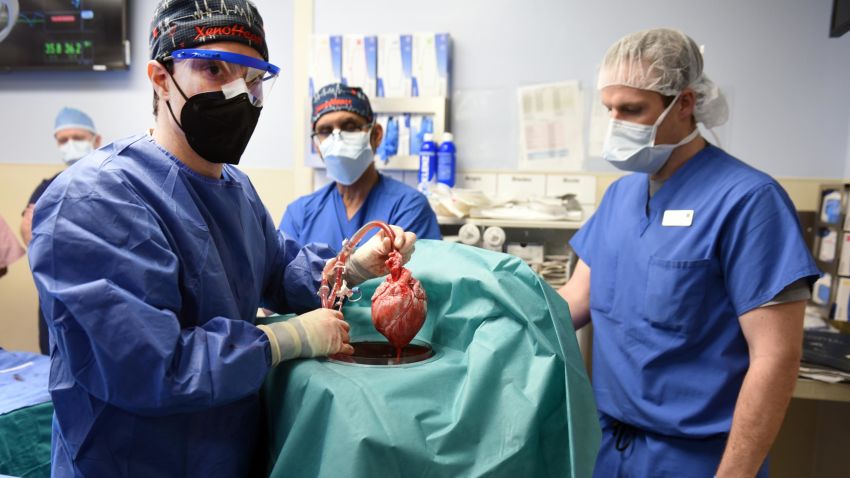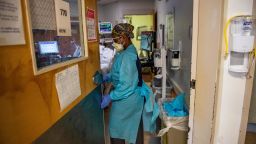Editor’s Note: Jonathan Reiner, MD, is a CNN medical analyst and professor of medicine and surgery at George Washington University. The views expressed in this commentary belong to the author. View more opinion on CNN.
The news last week that David Bennett, a 57-year-old Maryland man, nearing death, had undergone cardiac transplant surgery with a genetically modified pig heart sent shock waves through the medical community and was hailed as a breakthrough in bioengineering, potentially ushering in a new era in solid organ transplantation. While our experience with this technology is still developing and much more research needs to be done, the operation and bravura science that made it possible provide a breathtaking glimpse into a future where patients will potentially spend days rather than months or years on a transplant list.
This year, the tens of thousands of Americans hoping for a transplant will anxiously await the call telling them an organ has been found. Some of the patients, sick with congestive heart failure, will wait for a heart. Those with end-stage renal disease who are being sustained with dialysis, will wait for a kidney. Others with liver disease, or failing lungs will also wait their turn. There are currently more than 100,000 people who are on the waiting list for an organ transplant, according to the United Network for Organ Sharing. In 2021, only about 41,000 organ transplants were performed – the highest annual figure since at least 1988, according to UNOS. Given the high demand, some patients will continue to wait. Others will eventually die. More than anything else, the problem is a lack of donor organs.
It has been 54 years since Dr. Christiaan Barnard performed the first human heart transplantation with the heart of 25-year-old Denise Darvall, who had a fatal brain injury after being hit by a car, into the chest of 53-year-old Louis Washkansky who was dying of heart failure. Mr. Washkansky lived for 18 days, but Dr. Barnard’s second patient lived for 18 months with his transplanted heart.
Over the ensuing half-century, while surgical techniques have been greatly refined for preserving and transplanting solid organs like the heart, kidneys, lungs and liver, some of the greatest advances have fostered the development of novel drugs allowing patients to live for many years without the risk of organ rejection. Now, the majority of heart transplant recipients survive at least 10 years.
While the safety and efficacy of transplantation have improved immeasurably over the last several decades, the supply of donor organs remains a problem. There are multiple barriers to organ donation including family reluctance and a general lack of social education about the lifesaving nature of organ transplantation. The net result is a perpetual shortage of donor organs. The breakthrough implication of Mr. Bennett’s recent surgery is not only what it does for heart transplants, but also what it does for the supply of organs for transplant surgery as a whole.
Xenotransplantation, the transplant into a human of an organ from a nonhuman animal, has been tried without success in the past. In 1984 Stephanie Fae Beauclair (who was called Baby Fae) was born with hypoplastic left heart syndrome. In an attempt to save her life, she underwent cardiac transplantation with the heart of a baboon. She died of organ rejection 21 days after surgery.
For a nonhuman donor organ to function adequately in a human host, it must be anatomically similar (so as to allow for surgical implantation), function well in the human setting and not be rejected. (Graft rejection is a risk all transplant recipients face, however it is particularly challenging when the donor organ originates from a nonhuman source.)
Although the heart of a grown pig is anatomically similar to a human heart, for Bennett’s operation, researchers at the University of Maryland modified 10 genes in the pig. Some pig genes were disabled or “knocked out” to prevent acute rejection. Another gene was modified to prevent the donor heart from continuing to grow to an unacceptably large size after transplantation. Several human genes were given to the pig to prevent clotting abnormalities in the new heart. As is also required for this type of transplant, powerful anti-rejection drugs were administered as well.
We will know relatively soon whether the audacious operation restores Bennett’s health. While his recovery is uncertain and perhaps even a long shot, what is certain is that the door to using bioengineered nonhuman organs has been opened – and with it, the promise of an almost unlimited supply of donor organs could follow. While the road ahead is surely filled with new physiological, technical and even ethical challenges, we may one day look at this courageous procedure the way we now look at Dr. Christaan Barnard’s first heart transplant.





